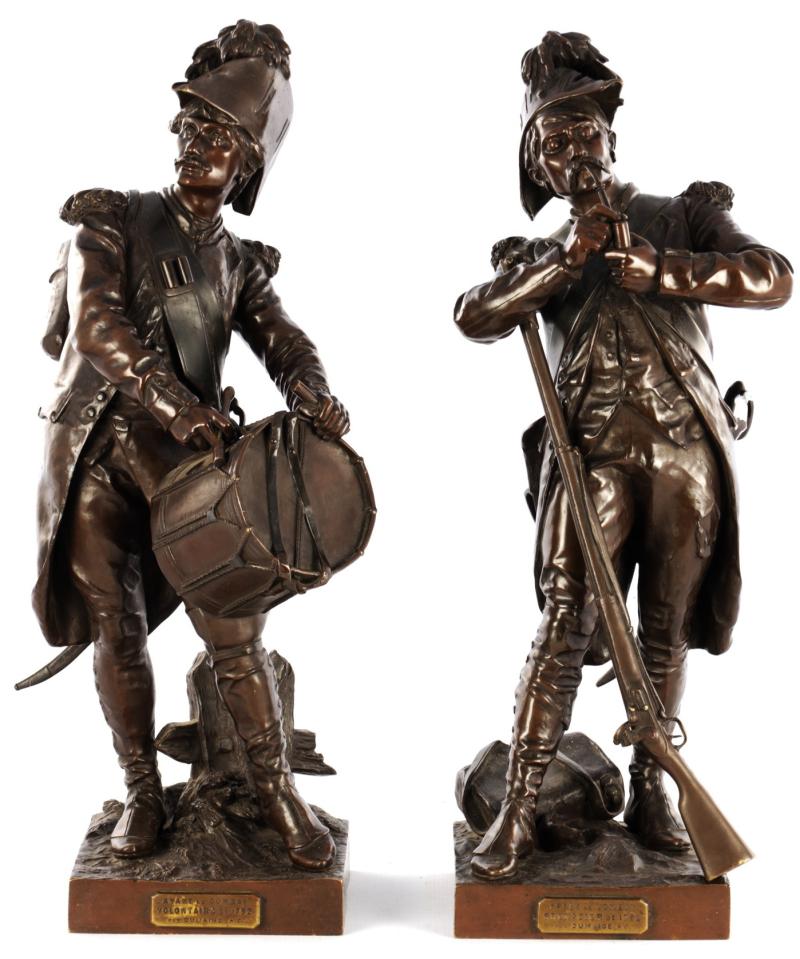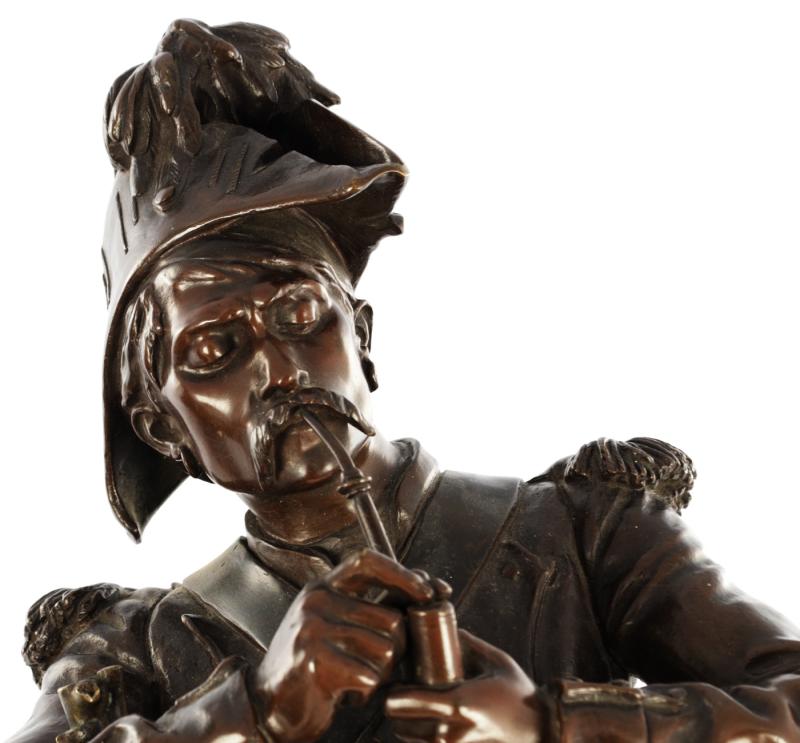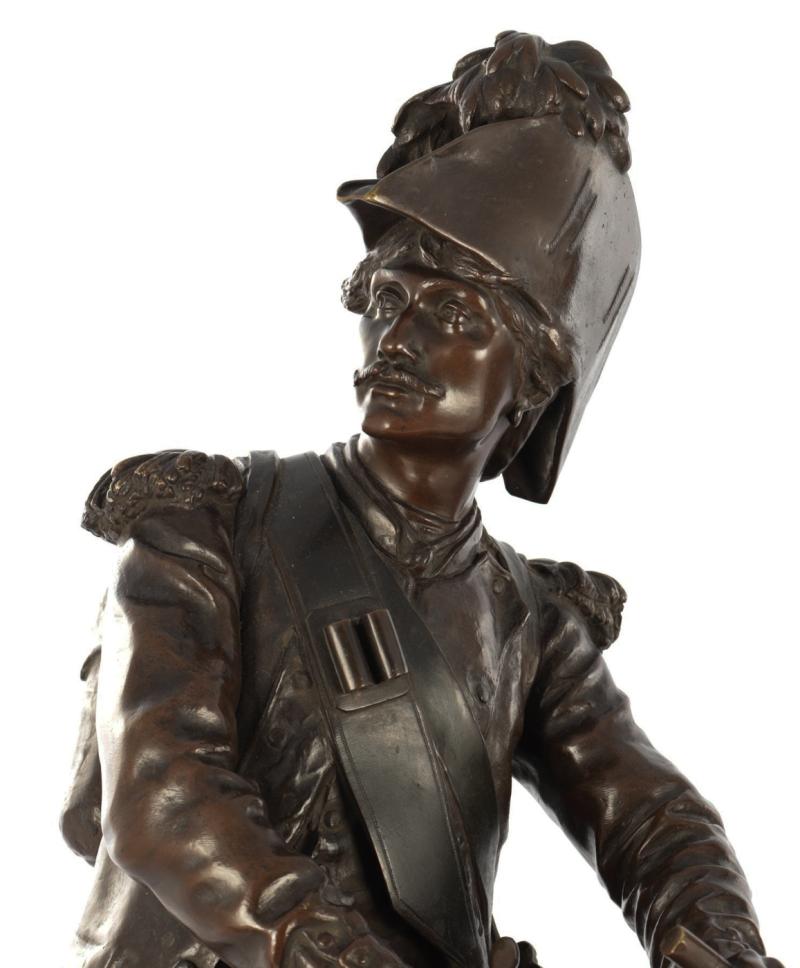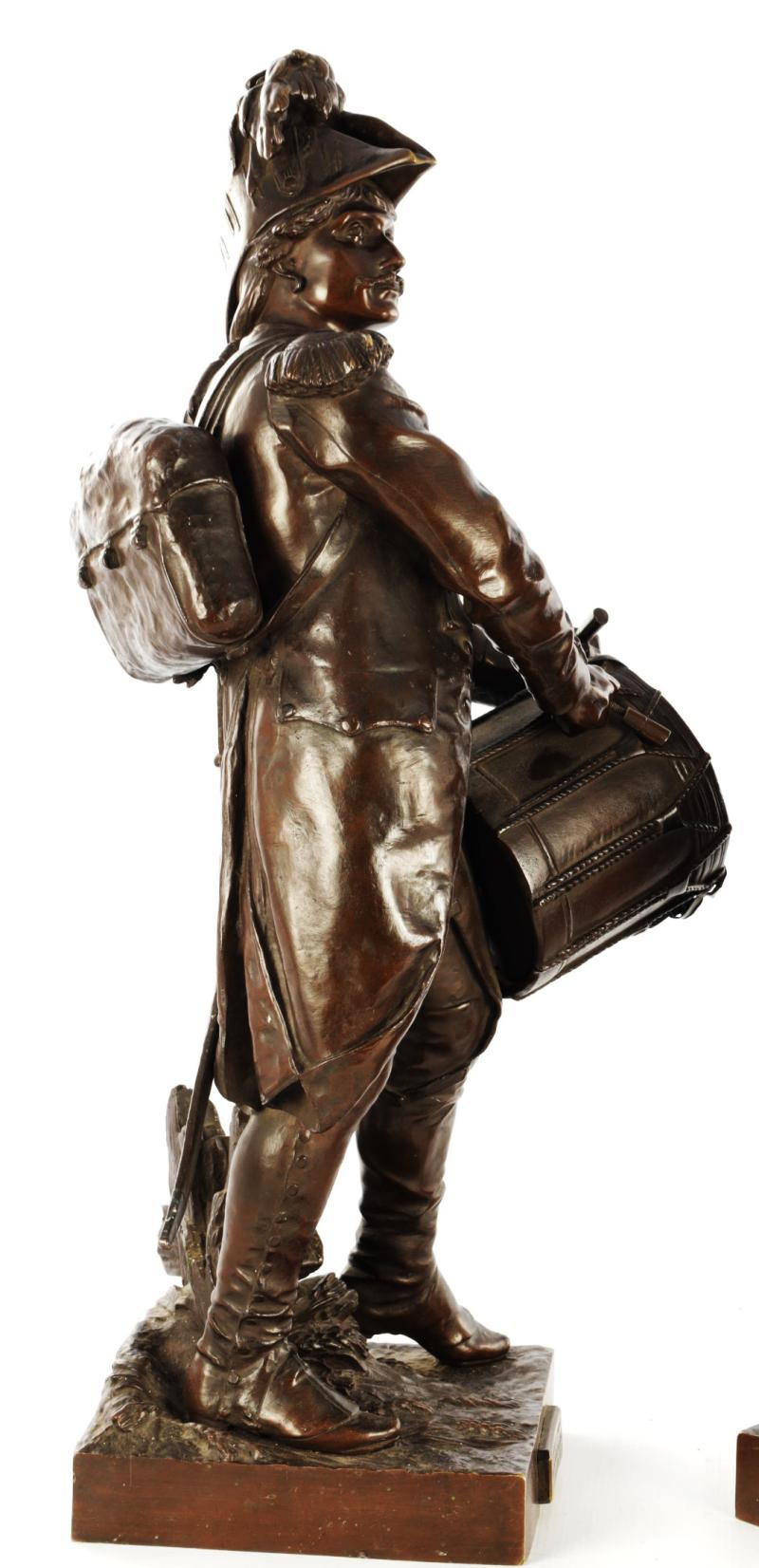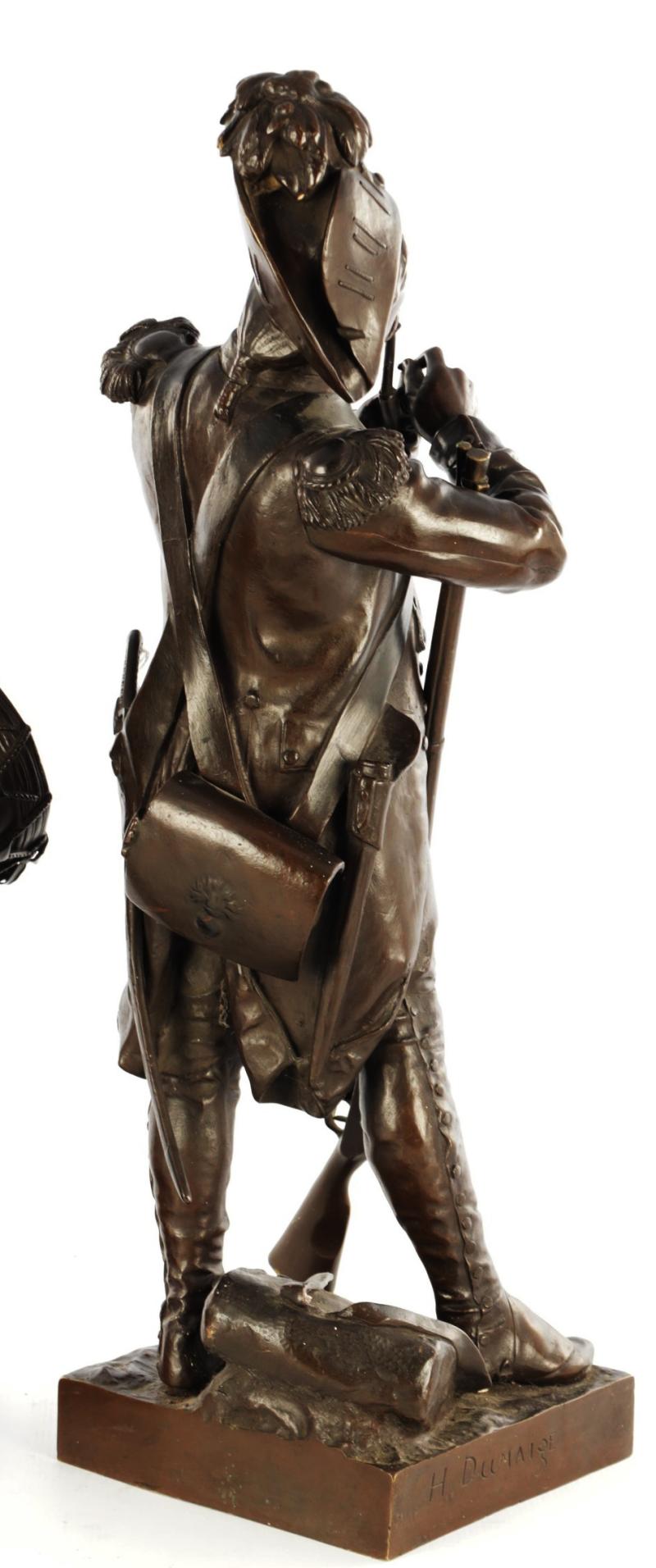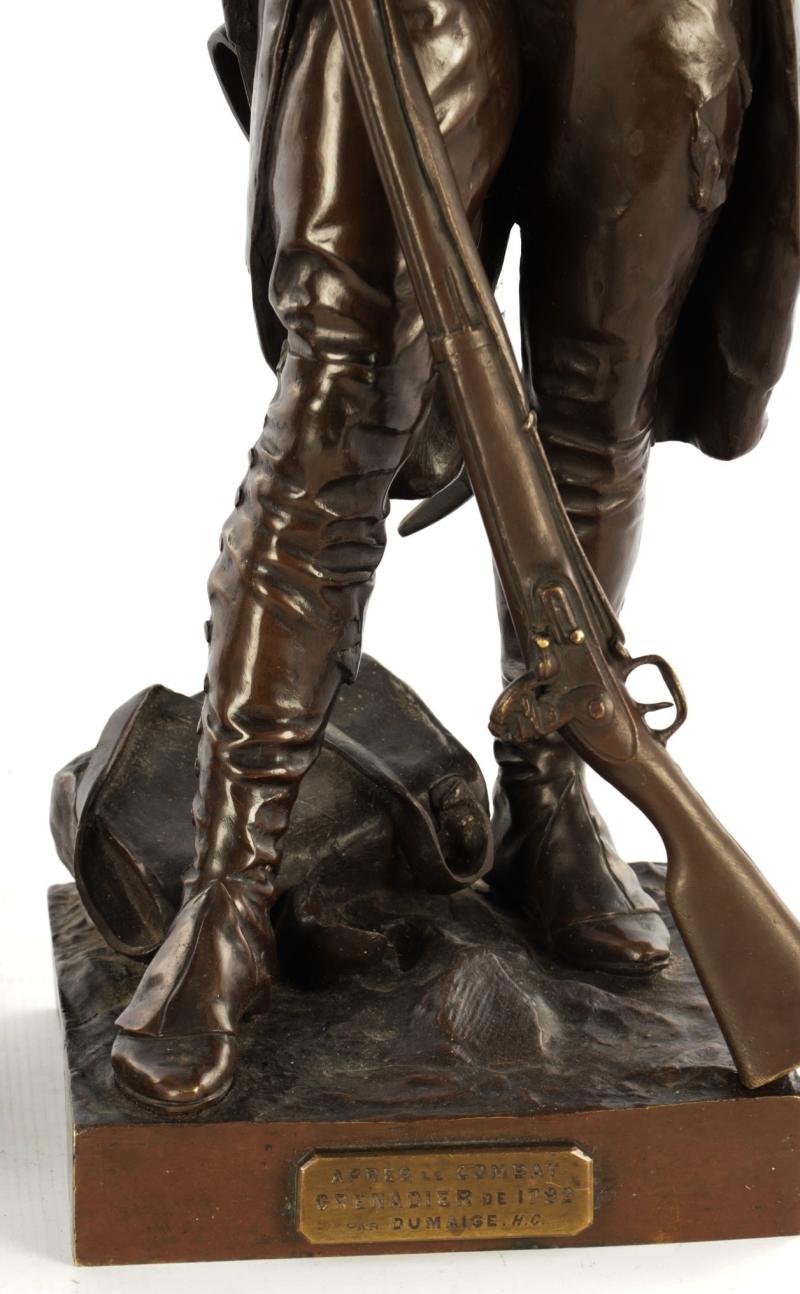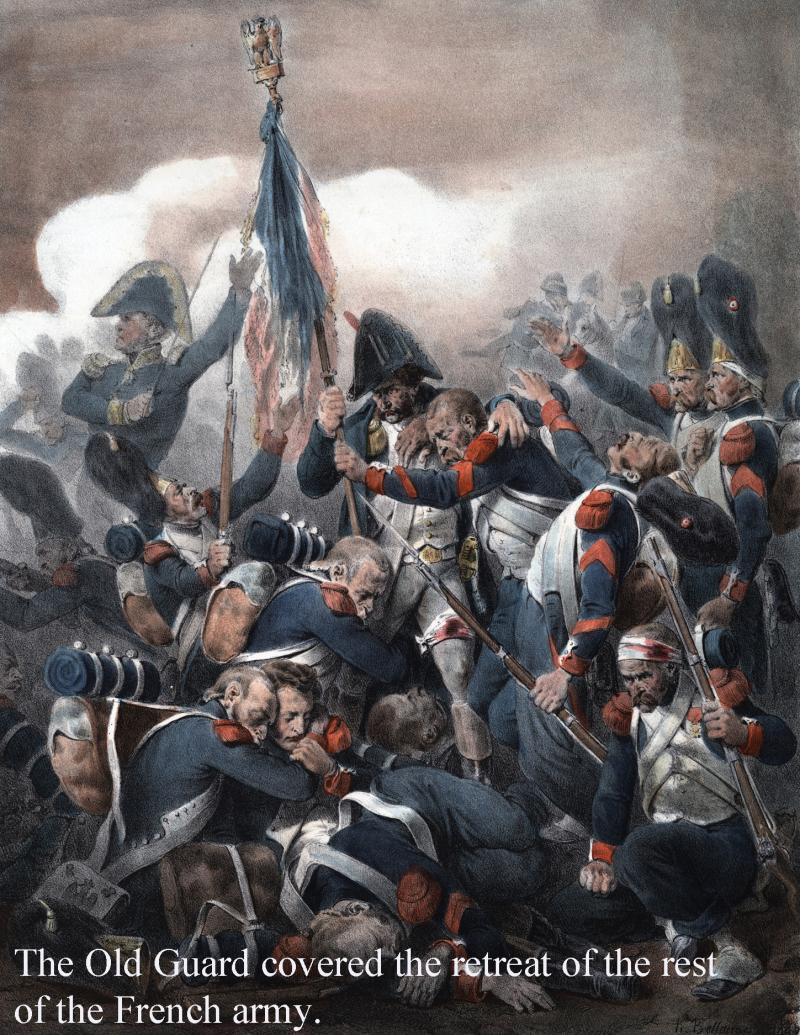Magnificent Large Pair of Antique,19th Century French Napoleonic Bronzes of 'Old Guard' Soldiers, a Drummer & Grenadier.'Avant le Combat' & 'Apres le Combat' Henri Dumaige. French Soldiers Often Referred to Napoleon's Old Guard as "the Immortals"
A Fine Pair of Large Bronze Figures, Entitled 'Avant le Combat' and 'Apres le Combat', Cast from the models by Etienne-Henri Dumaige (1830 - 1888) (1830 - 1888) Signed H. Dumaige, with title plaquettes.
The Old Guard (French: Vieille garde) was a formation of the French Imperial Army's Imperial Guard. Consisting exclusively of revolutionary veteran troops, it was the most prestigious formation in Napoleon's Grande Armée. French regular soldiers often referred to Napoleon's Old Guard as "the Immortals".
Famously devoted to the Emperor, who even referred to them as "my children"; the members of his Old Guard were selected based on physical traits, most notably above-average height. Their imposing stature was likely impressive to foes and allies alike. Awards as well as veterancy were also taken into consideration when selecting troops for the Old Guard.
ON THE EVENING of April 11, 1814, Napoleon Bonaparte’s 20-year career as a conqueror was seemingly at an end.
The 44-year-old emperor had just surrendered France to a coalition of a dozen European powers. As part of the armistice, he also agreed to give up the throne and go into exile on the tiny Mediterranean island of Elba.
On the eve of his departure, a shattered Napoleon marched into the courtyard of his palace at Fontenbleu to deliver a heartfelt farewell to a very special group of soldiers – his Old Guard.
“For 20 years, I have accompanied you on the road to honour and glory,” he cried before departing. “I intend to write the history of the great achievements we have performed together. Adieu, my friends. If I could, I would press you all to my heart.”
According to legend, more than a few of the battle-hardened veterans broke down as the scene played out before them.
The Guard was made up of Napoleon’s finest. They were the most seasoned soldiers of the French army and the best of his elite Imperial Guard. All were hand-picked volunteers of above-average height, each one hardened by years of campaigning.
The emperor housed his fiercely loyal Old Guard in the best quarters, dressed them in the sharpest uniforms and lavished them with the finest rations. In return, he expected them to fight ferociously when called upon. And fight they did, with unflagging bravery in all of Napoleon’s most famous battles.
Disbanded in 1814, elements of the Old Guard would reform the following year as Bonaparte escaped from exile. Yet despite their final defeat at Waterloo 100 days later, the Old Guard would go down in history as one of the most famous fighting units to ever set foot on a battlefield.
The bronzes represent two separate moments in the French Revolution, the uprising against Louis XVI and the fall of the monarchy. Both the soldiers depicted here went on to become part of Napoleon's veteran Old Guard of the Grande Armee. The most fiercely loyal and the highest regarded French soldiers of the entire Napoleonic wars era.
One figure is entitled 'Avant le combat 1792' and depicted as a Drummer calling the the citizens to the barricades.
The second figure is entitled ‘Apres le Combat 1792’ and depicted as a Grenadier or infantryman; this figure is portrayed smoking a pipe and relaxing as he leans on his musket.
Dumaige studied sculpture under Féuchère and Dumont. He exhibited his sculptures depicting groups, statues, and busts at the Salon from 1863-1886
Henry Etienne Dumaige
Born in Paris in 1830, Henry Etienne Dumaige studied sculpture under Féuchère and Dumont. He exhibited his sculptures depicting groups, statues, and busts at the Salon from 1862-1877.
He sculpted a large number of busts, groups and statuettes in marble, plaster and bronze, including statuettes of Desmoulins and Rabelais. He died at St-Gilles-Croix-de-Vié in 1888
Dumaige was a French bronzier and sculptor born in Paris in 1830, where he worked during the mid-19th Century. Dumaige exhibited his sculptures at the Paris Salon and the Academie des Beaux-Arts from 1862-1877, where he was widely acclaimed for the variety of his oeuvre. He was adept in depicting groups, statues and busts in bronze, plaster and marble.
Reference;
Lami, Stanislas (1914), Dictionnaire des Sculpteurs de l'Ecole Francais.
Berman, Harold (1981), Bronzes- Sculptors and Founders 1800-1930, Abage, Chicago.
Forrest, Michael (1988), Art Bronzes, Schiffer Publications, Pennsylvania.
Kjellberg, Pierre (1987), Les bronzes du XIX siecle, dictionnaire des sculpteurs, L'Amateur, Paris.
Dimensions
Height : 64 cm 25.5 inches Width : 11 inches Depth : 11 inches
Code: 25725
12500.00 GBP

